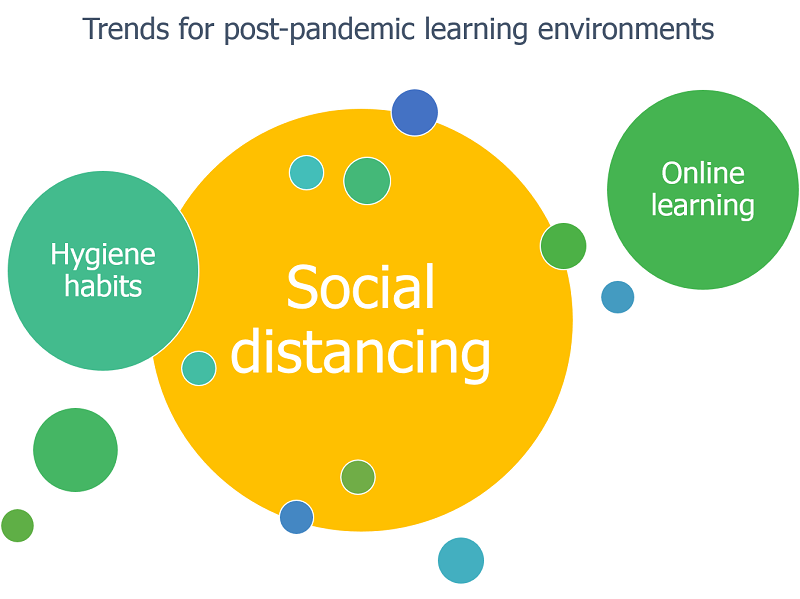By Alastair Blyth
Consultant to the OECD Effective Learning Environments Project, Principal Lecturer, University of Westminster, UK
And Julie Velissaratou
Consultant to the OECD Effective Learning Environments Project
Getting 1.5 billion students back to school will be a relief to parents and governments alike. Parents can go back to work, economies can begin to move. But the threat of future waves of coronavirus (COVID-19) outbreak remains. As schools learn how to cope in this very different context there are many issues to consider such as supporting vulnerable students, ensuring equity and boosting capacity for online learning.
Some countries are only beginning to introduce measures to tackle the pandemic, others have already announced the lifting of some restrictions. Some schools for younger children reopened in Denmark last week and the same is due to happen in Norway this week. The right time for the schools re-opening is difficult to determine. Testing, tracking and tracing are a few of the methods discussed in the route to relax confinement restrictions.
Timing aside, one of the immediate concerns lies in preparing the physical learning environment. What initial lessons can we draw from what we are seeing already?
“Re-opening schools should be carefully planned and aligned with the recommendations of health officials,” advises Kim Shannon, Head of Education Infrastructure Service in the Ministry of Education of New Zealand who also chairs OECD work on Effective Learning Environments. Clearly, there is no one-size-fits-all solution and a lot will depend on how the coronavirus pandemic has affected individual countries and their resilience.
Three areas of focus are dominating decision-makers’ discussions about post-pandemic physical learning environments: encouraging new hygiene habits; enabling social distancing in schools; and strengthening online learning.
There is no one-size-fits-all solution and a lot will depend on how the coronavirus pandemic has affected individual countries and their resilience.

Encouraging new hygiene habits
Once schools re-open, everyone will be required to regularly wash their hands and cough or sneeze into their elbow or a tissue. Schools will need to think about how to implement a range of complementary measures including:
- Spaces and services: Schools will need sanitation facilities that make social distancing possible. Schools may need to provide an isolation room for a suspected COVID-19 infection. Additional cleaning of the school facilities and deep cleaning/disinfection at regular intervals will be required.
- Procurement of sanitation/hygiene products: Sanitising gel for use, for example, before entering a classroom, antibacterial wipes for the cleaning of desks and chairs, requirements to use masks and/or gloves. Perhaps introduce liquid soap dispensers rather than solid soap bars.
- Training: Schools may be required to train students, teachers and staff on basic hygiene and barrier gestures, and even the symptoms and effects of coronavirus.
Enabling social distancing in schools
Social or physical distancing in schools means that students will need to be at least two metres (about six feet) away from each other and teachers. This is not easy for young children and impossible for a class of 30 students in a standard-sized classroom of 60m2 (about 600 ft2).
Reducing student numbers inside learning spaces can largely be achieved by changing the scheduling. For example, sub-dividing every class into smaller groups, scheduling shorter school hours, scheduling morning and evening shifts (such as by age groups), repurposing larger spaces such as canteens, gyms, libraries and halls. A hybrid option might be to conduct some classes in school and others on line.
Much of the focus is on what goes on inside school buildings, but what about spaces outside the classroom? In milder climates, it may be possible to use external spaces around the school buildings for teaching and learning so long as suitable shading is provided.
Well-ventilated spaces become even more important than before. While school furniture could be used to discourage students from getting closer than two metres to someone else, other solutions include graphic elements on the floor to secure the minimum distance, just as in the queues in supermarkets.
Online education is on the rise, but risks exacerbating inequalities
Although access to online resources has doubtless helped many students at home, those with little or no access to online resources have been disadvantaged. These inequalities have been a source of concern for many governments who are focusing on measures for vulnerable students to tackle their learning gaps and ensure their well-being. Some authorities have focused on providing students with laptops or tablets, and better access to 4G mobile networks. In England, for example, the Department of Education recently announced a substantial package to support online learning. Others are ramping up alternative channels for distance learning such as TV and radio.
Although we cannot predict how life in schools will change after the pandemic, given that pandemics may have multiple waves we will need to quickly learn lessons from the current crisis to build robust strategies for the future.
As part of the ongoing development of a rapid response framework for COVID-19, the Harvard Graduate School of Education and the OECD Directorate of Education and Skills have launched a new survey focusing primarily on school re-opening.
Submissions can be made on line until 7 May.
Read more:


